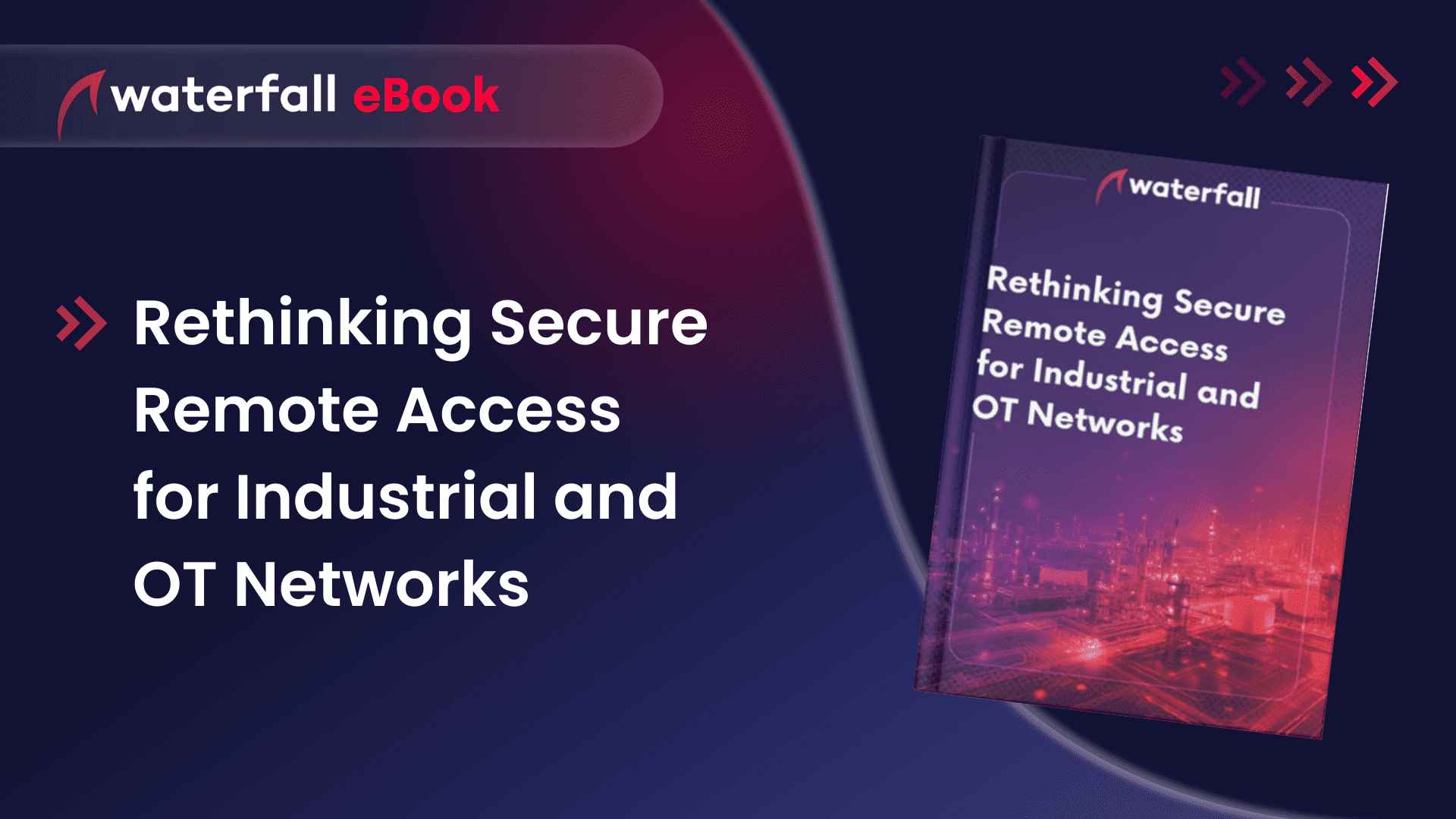Rethinking Secure Remote Access for Industrial and OT Networks

Remote access is essential—but traditional solutions like VPNs and jump hosts are increasingly under fire from both attackers and regulators. With guidance from CISA and CCCS urging organizations to move beyond legacy remote access tools, the stakes for industrial and OT networks have never been higher.
This ebook demystifies secure remote access technologies, from classic firewalls and 2FA to hardware-enforced solutions and unidirectional gateways. Discover which approaches truly protect against today’s threat landscape—and which leave critical operations exposed.
Download the book now to:
![]() Gain a deep understanding of modern and legacy remote access technologies – including VPNs, firewalls, 2FA, jump hosts, cloud systems, and hardware-enforced solutions.
Gain a deep understanding of modern and legacy remote access technologies – including VPNs, firewalls, 2FA, jump hosts, cloud systems, and hardware-enforced solutions.
![]() Explore common attack scenarios and assess how different combinations of security technologies perform against actual threats
Explore common attack scenarios and assess how different combinations of security technologies perform against actual threats
![]() Learn which security measures are most effective for specific attack types, helping you make informed decisions about protecting remote access in your organization
Learn which security measures are most effective for specific attack types, helping you make informed decisions about protecting remote access in your organization
About the author
Waterfall team
FAQs About Remote Access
What is Remote Access?
Remote access for OT (Operational Technology) networks is the ability to connect to and control industrial systems from outside the facility—often over the internet or corporate IT networks.
This allows engineers, vendors, or operators to:
Monitor and manage ICS, SCADA, and other OT systems remotely
Perform maintenance, updates, or troubleshooting without being on-site
Enable emergency intervention from anywhere
✅ Common technologies for remote access:
VPNs – Secure encrypted tunnels into OT networks
Jump servers / Bastion hosts – Controlled gateways between IT and OT
Remote Desktop (RDP/VNC) – Access to HMI or control workstations
OT-specific platforms – Purpose-built tools for safe industrial remote access
MFA / 2FA – Authentication to ensure only authorized users connect
⚠️ Remote access increases convenience, but also creates potential entry points for attackers if not properly secured.
Why would I need remote access to an OT network?
Organizations use remote access to:
1. Improve Efficiency
Engineers can diagnose and configure systems without traveling
Reduces downtime for routine maintenance
2. Support Vendor Access
Equipment vendors can update or troubleshoot systems remotely
Faster support without waiting for on-site technicians
3. Handle Emergencies
Teams can respond to incidents outside working hours
Quick intervention minimizes production impact
4. Lower Costs
Saves money on travel, labor, and incident response
Enables small OT teams to manage multiple sites
5. Enable Remote Operations
Operators can control or monitor sites across large geographic areas
Ideal for distributed infrastructure like pipelines, wind farms, or utilities
What are the risks associated with remote access to OT networks?
While powerful, remote access brings serious cybersecurity risks to industrial environments:
⚠️ Top Risks Include:
Unauthorized Access
Stolen or reused credentials can give attackers access
Weak or shared authentication increases exposure
Vulnerable Technologies
VPNs, RDP, and web tools may have unpatched flaws
Attackers exploit them to gain a foothold in OT
Lateral Movement
Once inside, attackers move from one device to another
Can lead to control over critical operations
Human Error
Remote staff may misconfigure systems
Vendors might introduce malware accidentally
Malware and Ransomware
Remote sessions can be used to inject malicious code
Poor segmentation allows malware to cross into OT from IT
Regulatory and Safety Violations
Unauthorized changes can impact safety and compliance
Could trigger penalties, outages, or safety incidents
✅ Conclusion: Remote access brings flexibility, but also risk. Implementing strong authentication, network segmentation, monitoring, and vendor controls is essential to stay secure.